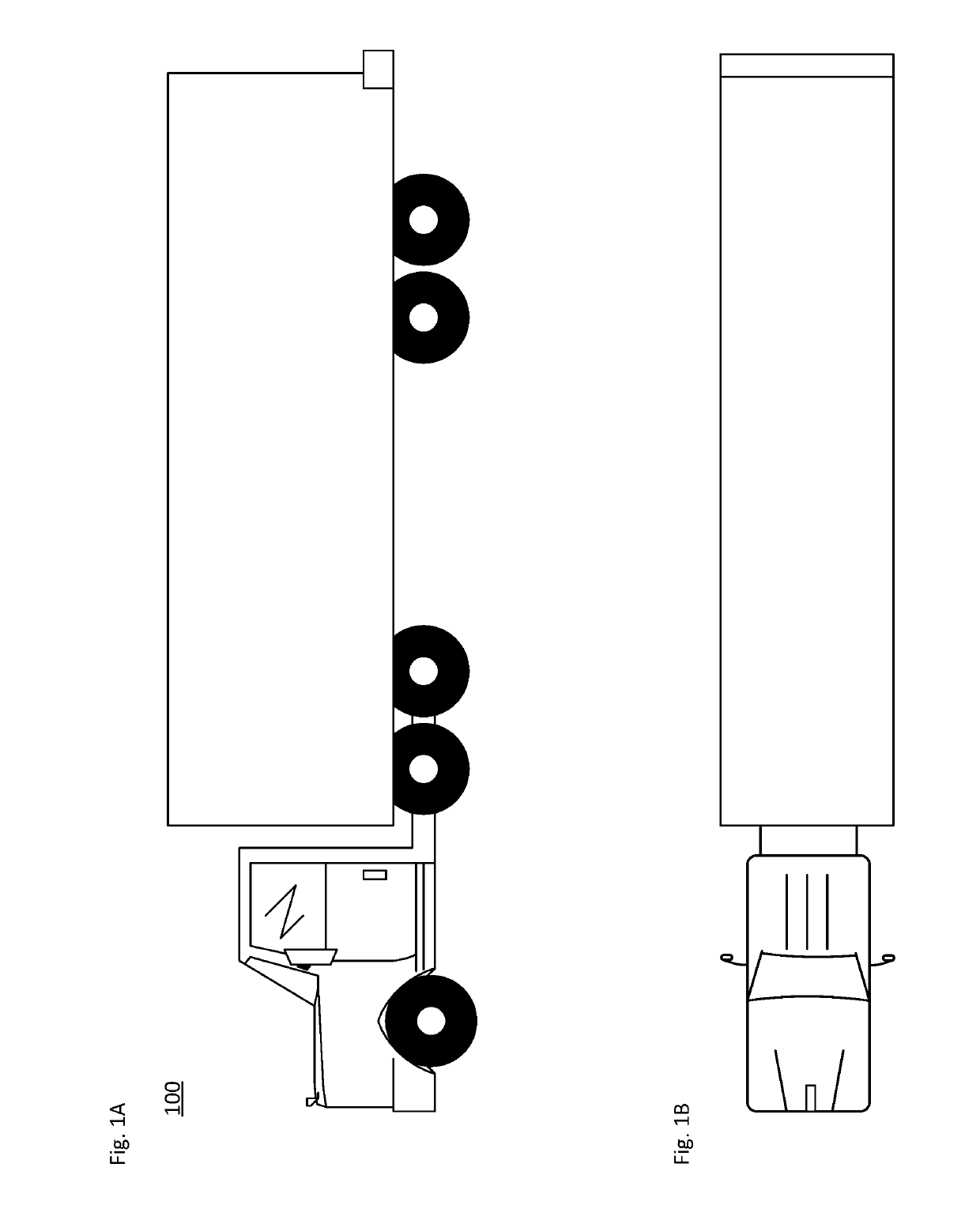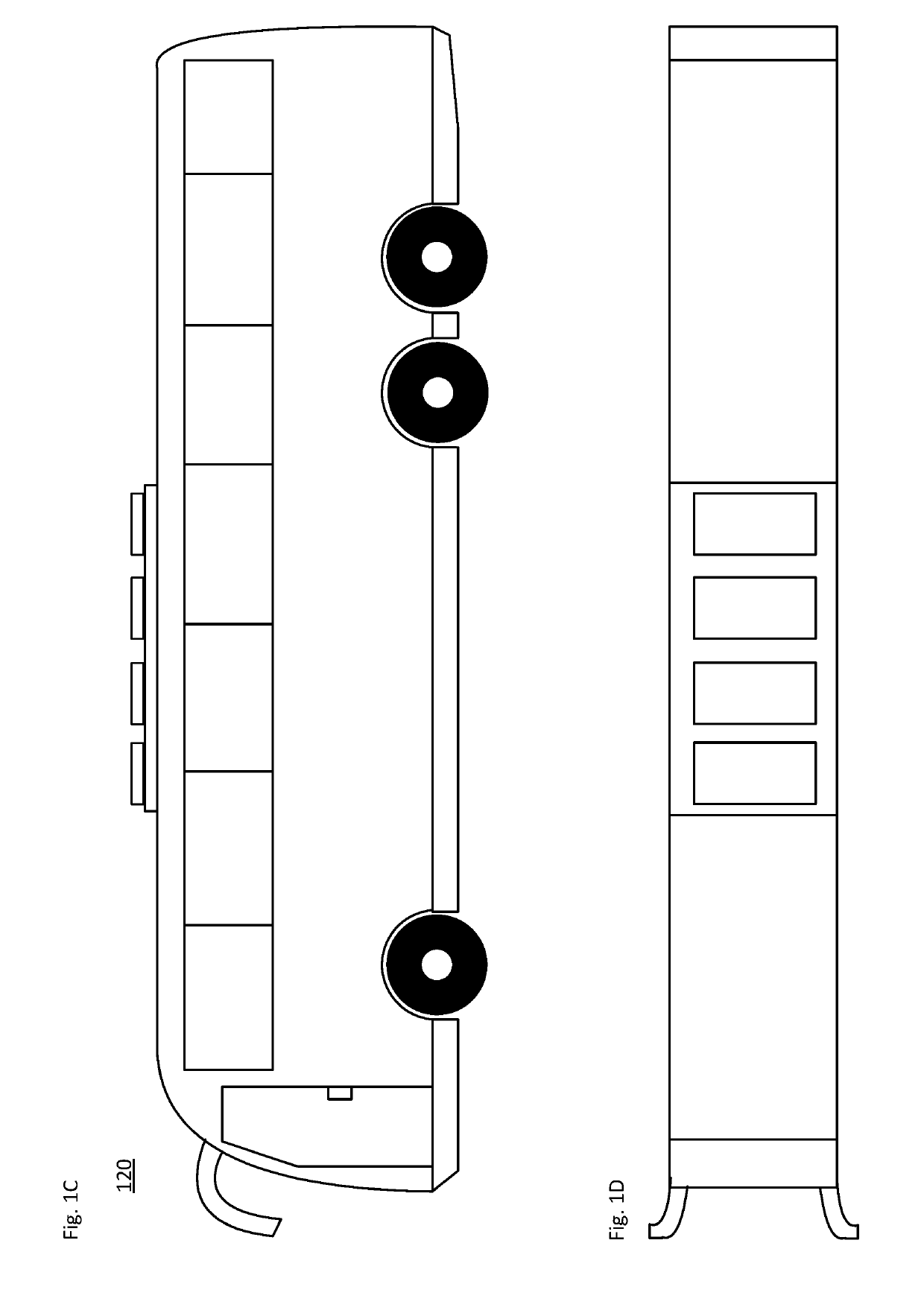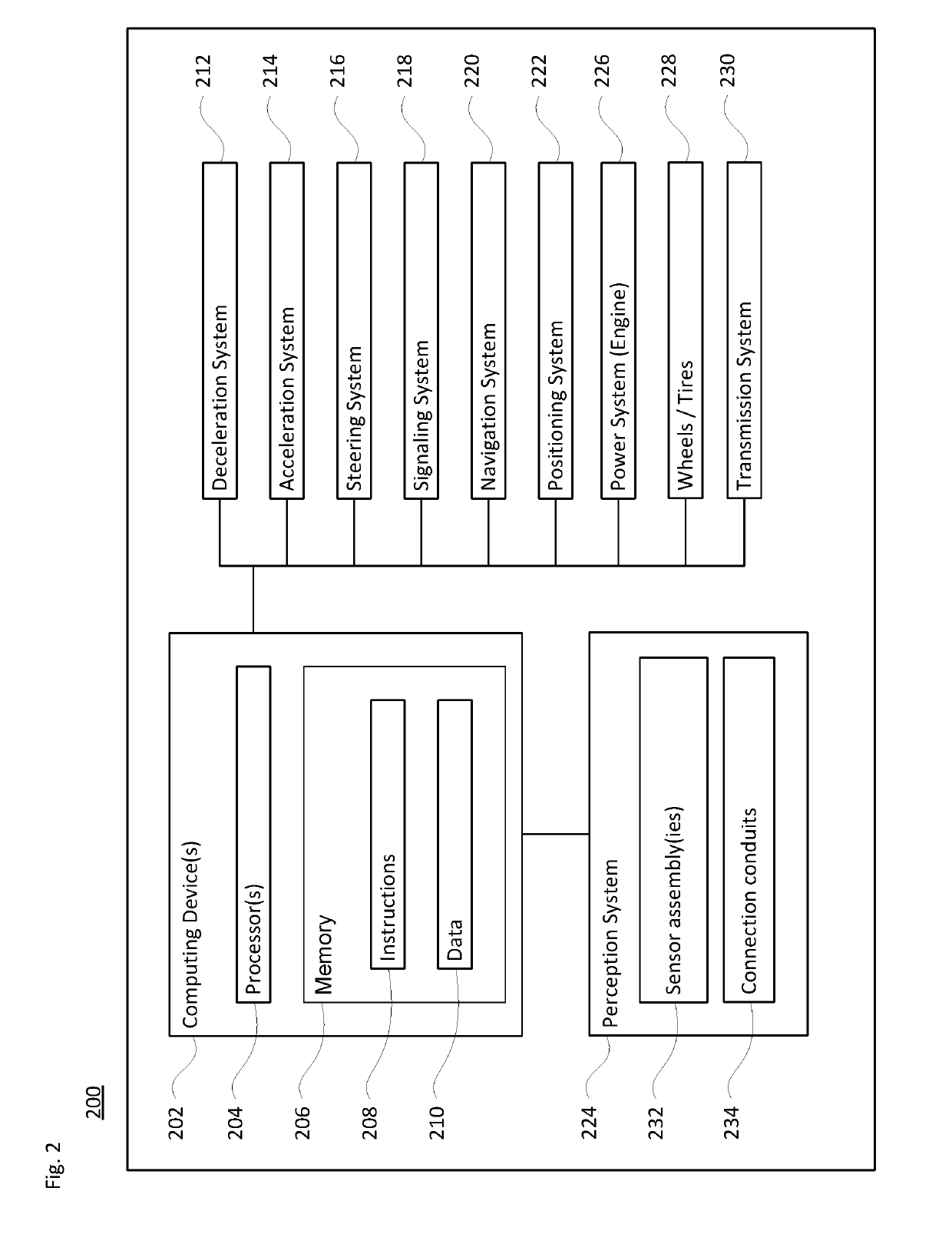Sensor integration for large autonomous vehicles
a technology for autonomous vehicles and sensors, applied in the direction of vehicle position/course/altitude control, using reradiation, instruments, etc., can solve the problems of large vehicle equipment costs and the placement of such sensors, and achieve the effect of improving the field of view of sensors
- Summary
- Abstract
- Description
- Claims
- Application Information
AI Technical Summary
Benefits of technology
Problems solved by technology
Method used
Image
Examples
example implementations
[0038]In addition to the structures and configurations described above and illustrated in the figures, various implementations will now be described.
[0039]As noted above, for large trucks, busses, construction equipment and other vehicles, it may be impractical to place sensors on the roof of the vehicle. The roof can be hard to access and has side view limitations. In addition, mounting various sensors on the roof may interfere with aerodynamic roof fairings. While different sensors could be distributed along the front, sides and rear of the vehicle, this may be costly and require running individual data, power and / or cooling lines to each individual sensor. Furthermore, such a solution could be very hard to implement with legacy vehicles, or when the cab of a truck is capable of operating in an autonomous mode but the trailer is a legacy trailer without the necessary sensors.
[0040]Thus, according to one aspect, the sensor housing is integrated into a side view mirror assembly, suc...
PUM
 Login to View More
Login to View More Abstract
Description
Claims
Application Information
 Login to View More
Login to View More - R&D
- Intellectual Property
- Life Sciences
- Materials
- Tech Scout
- Unparalleled Data Quality
- Higher Quality Content
- 60% Fewer Hallucinations
Browse by: Latest US Patents, China's latest patents, Technical Efficacy Thesaurus, Application Domain, Technology Topic, Popular Technical Reports.
© 2025 PatSnap. All rights reserved.Legal|Privacy policy|Modern Slavery Act Transparency Statement|Sitemap|About US| Contact US: help@patsnap.com



